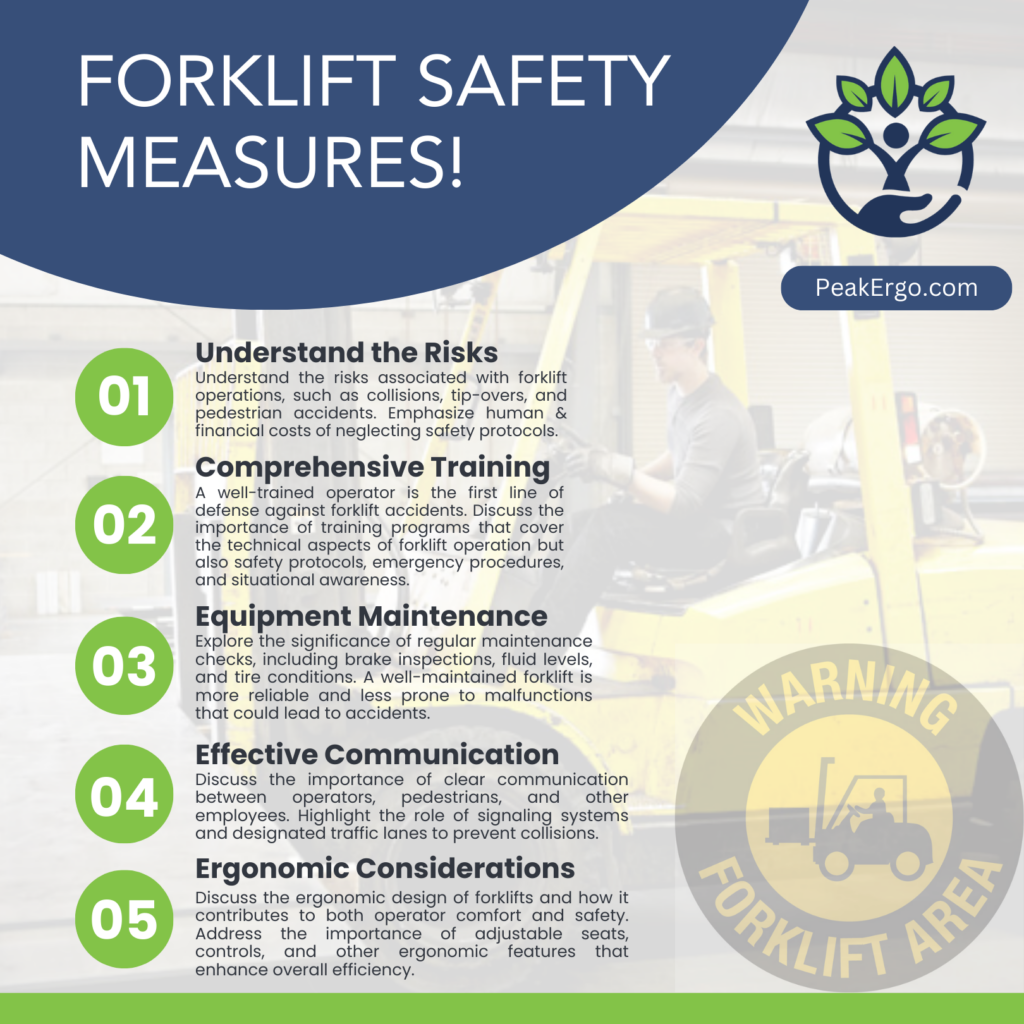 Maximizing Workplace Safety: A Guide to High-Impact Forklift Safety
Maximizing Workplace Safety: A Guide to High-Impact Forklift Safety
In the fast-paced world of industrial operations, forklifts play a crucial role in material handling. However, their power and utility come with inherent risks. Prioritizing high-impact forklift safety is not just a legal requirement but a moral obligation to ensure a secure working environment. In this article, we will delve into essential safety measures and best practices to mitigate risks associated with forklift operations.
Download/View Forklift Safety Measures Tip-Sheet
Forklift Safety Measures Needed to Mitigate Risks
1. Understanding the Risks:
Forklift-related accidents can lead to serious injuries and fatalities. Highlight the common risks associated with forklift operations, such as collisions, tip-overs, and pedestrian accidents. Emphasize the financial and human costs of neglecting safety protocols.
2. Comprehensive Training Programs:
A well-trained operator is the first line of defense against forklift accidents. Discuss the importance of comprehensive training programs that cover not only the technical aspects of forklift operation but also safety protocols, emergency procedures, and situational awareness.
3. Regular Equipment Maintenance:
Safe forklift operation begins with well-maintained equipment. Explore the significance of regular maintenance checks, including brake inspections, fluid levels, and tire conditions. A well-maintained forklift is more reliable and less prone to malfunctions that could lead to accidents.
4. Effective Communication Protocols:
Communication is key in any workplace, especially where forklifts are in operation. Discuss the importance of clear communication between operators, pedestrians, and other employees. Highlight the role of signaling systems and designated traffic lanes to prevent collisions.
5. Ergonomic Considerations
Connect workplace safety with your expertise in ergonomics. Discuss the ergonomic design of forklifts and how it contributes to both operator comfort and safety. Address the importance of adjustable seats, controls, and other ergonomic features that enhance overall efficiency. Mention the latest technological advancements in forklift safety, such as proximity sensors, collision avoidance systems, and telematics. Highlight how these technologies can significantly reduce the risk of accidents and improve overall workplace safety.
Fields of Vision: Pedestrian Safety Around Forklifts (Video)
Things to Remember
Prioritizing high-impact forklift safety is a fundamental aspect of ensuring a secure and productive workplace. By implementing comprehensive training programs, regular maintenance checks, effective communication protocols, and leveraging cutting-edge technologies, organizations can create a safer environment for everyone involved.
By following these guidelines, organizations can create a culture of safety that protects both employees and assets. Stay tuned for more insights on workplace safety and ergonomics in our future blog posts.
